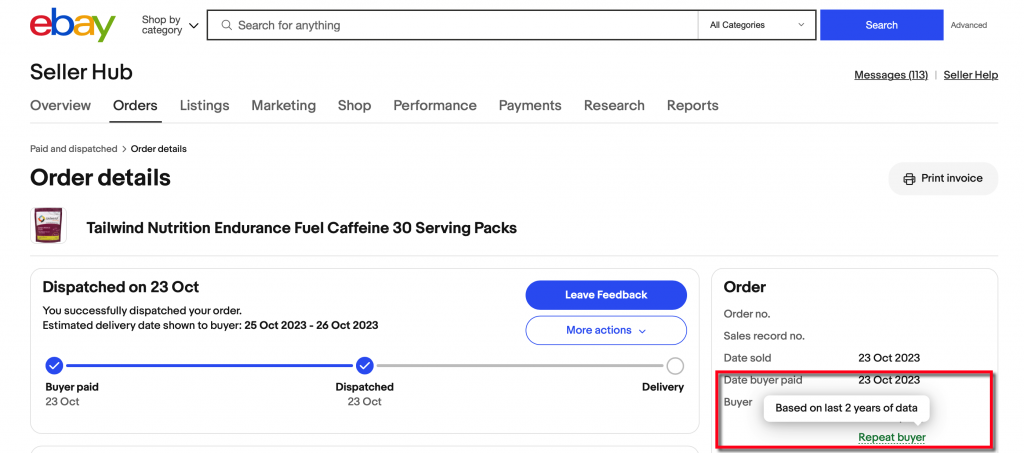One of the (many) things that I really value about retailing on eBay is the fact that it highlights repeat buyers to me. But I do find it frustrating that it’s so clunky to learn more about the customer. In building CXInventory I had the opportunity to fix this. This posts explains the mechanics of how you can use CXInventory to find out the back story to your eBay Repeat Buyers.
Why care about Repeat Buyers?
The answer to that of course will be screamingly obvious to you – because they are your most valuable asset! So the fact that they simply exist in your business is great news.
Knowing that they exist, and knowing that they have just transacted is one thing, but frustrating as I intuitively felt that it’s not worth knowing unless I can somehow leverage this insight.
A better customer insight
Enter CXInventory! One of the core functions of the platform is to provide a consolidated view of YOUR customer and as far as possible in an identifiable way. Let’s get into a couple of important points here:
Consolidated View
For many online retailers the world is definitely multi-channel now. In other words you will be selling products across many platforms; eBay, Amazon, Etsy and probably your own website build on maybe Shopify. You might not sell the same inventory on each platform, but you will probably operate in the same niche. You may be interested / surprised to discover that you sell to some people on different sites! By taking all of your sales transactions, CXInventory does some clever analytics to figure out who the customer was and therefore enable you to have a consolidated view of the customer.
Your Customer
Providing a Consolidated Customer View should have been a piece of cake! Except for one small fly in the ointment, which is a difference of opinion as to who ‘owns’ the customer. Given that the value of shopping platforms (I have eBay in mind here) is driven by customers, then it’s obvious that they will want to own the customer. But similarly the value in your business (and mine!) is also the end customer. Otherwise we are not retailing, but rather we are using our capital (to fund inventory) and acting as a third party logistics and fulfilment business for eBay. You might be cool with that, but many of us certainly are not!
Despite eBay (and others) going out of their way to impede the communication flow between us and our customers, it is still possible to piece together (with fairly high probability of certainty) who each customer is – even from the somewhat redacted eBay Sales History Report.
Identifiable
We know where the product was delivered to, we know the address of the person who made the payment, we know what was bought, we know when it was bought and we almost always know the names too. Sometimes we know more, depending on if we are processing new orders. If we are working with data other than eBay then we will almost certainly know more! Therefore OUR customer, and their trading history rapidly becomes identifiable.
Actionable insights
So what are we going to do with these exciting new insights? Well firstly by understanding the lifetime value of the customer we can decide how much (if any) time we want to invest in personalising the buying process for this person. We can then refine that decision by looking at the overall product mix and timing of purchases. We can quickly see if they buy across our different platforms and online properties.
Do we want to message them? If we have their email from a different platform do we want to reach them that way? Based on what we know of them do we want to offer them an upsell? Do we want to present a loyalty based offer? Do we simply want to engage them in a product related dialogue. There are many options available to you, now that you have unlocked you eBay Repeat Buyer.
So the next time you see this:

You will know that’s just the start of the story, no longer the end!
CXInventory is all about Customer Led Inventory Management and let’s you reimagine what inventory management could be in your business. You can find out more about the platform by visiting CXInventory. But really the best way to appreciate the potential of the platform is to take a look with a 1:1 demo. I would be delighted to personally show you the product I have built, so if you would like arrange a demo either drop me a quick message with some times and dates that would work best for you and I will get back to you next working day. Or, if you prefer you can arrange a demo directly using my Calendly link. Which ever is most convenient for you.


